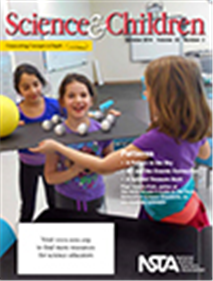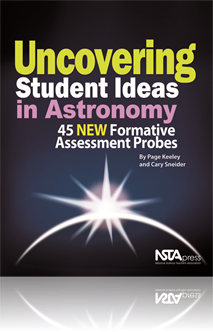All Astronomy resources
Journal Article
Science 101: Why Do We Only See One Side of the Moon?
This column provides background science information for elementary teachers. This month’s issue discusses the rotation of the moon....
NSTA Kids
La próxima vez que veas una puesta del sol
A 2014 Outstanding Science Trade Book for Students K-12!2014 Winner of the REVERE Award from PreK-12 Learning Group, Association of American Publishers! “Next time you see a sunset, stop and sit down for a while.”...
NSTA Press Book
Solar Science: Exploring Sunspots, Seasons, Eclipses, and More
Solar Science offers more than three dozen hands-on, inquiry-based activities on many fascinating aspects of solar astronomy. The activities cover the Sun’s motions, space weather caused by the Sun, the measurement of time and seasons in our daily ...
By Dennis Schatz, Andrew Fraknoi
Journal Article
Science 101: What Does the Sun Send to the Earth?
This column provides background science information for elementary teachers. This month’s issue discusses electromagnetic waves....
Journal Article
Editor's Note: Earth's Place in the Universe—Understanding Develops Over Time
Science and Children’s editor shares thoughts regarding the current issue....
Journal Article
Science 101: What Is the Controlling Force in the Universe?
This column provides background science information for elementary teachers. This month’s issue takes a deeper look at the four known forces in the universe....
Journal Article
Science 101: How Does the Motion of the Earth Affect Our View of the Sun?
This column provides background science information for elementary teachers. This month’s issue discusses the Sun's analemma pattern....
NSTA Kids
Children's Choices Winner, Children's Book Council and International Literacy Association!...
NSTA Press Book
Everyday Earth and Space Science Mysteries: Stories for Inquiry-Based Science Teaching
What are the odds that a meteor will hit your house? Do you actually get more sunlight from Daylight Saving Time? Where do puddles go? By presenting everyday mysteries like these, this book will motivate your students to carry out hands-on science in...
By Richard Konicek-Moran
Book Chapter
The purpose of this assessment probe is to elicit students’ understanding of the Earth- Sun-Moon system well enough to explain the causes of Moon phases and solar eclipses and how these two phenomena are related. ...







